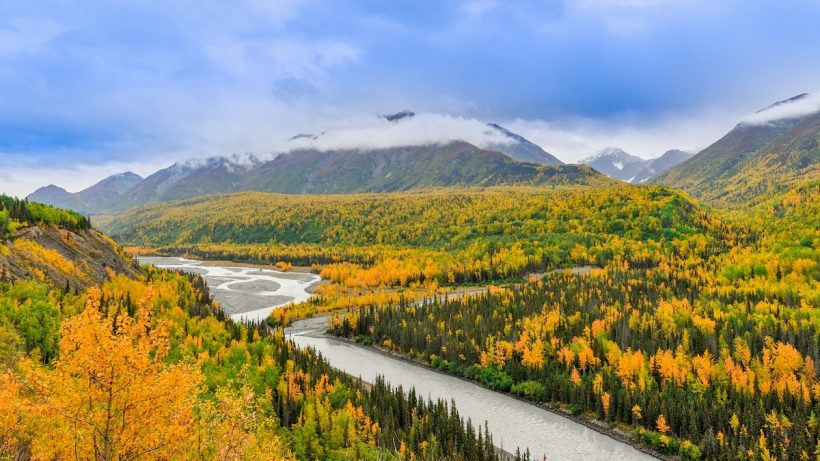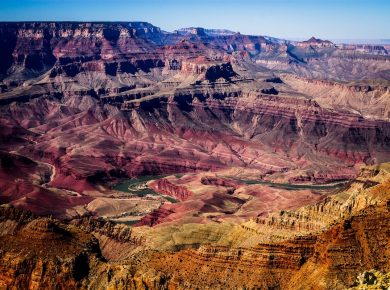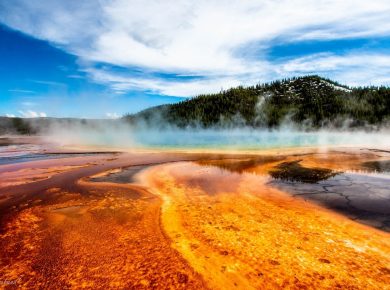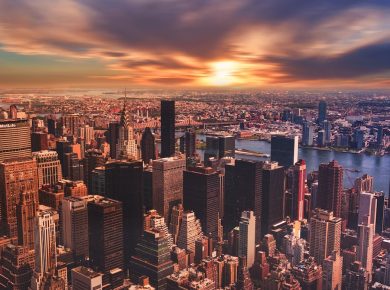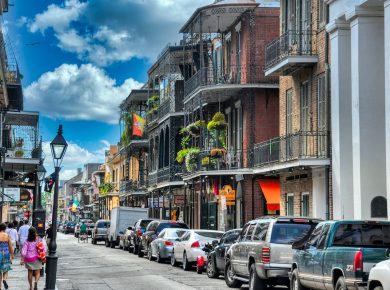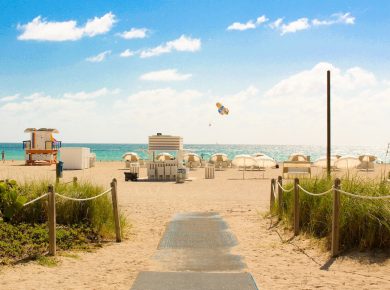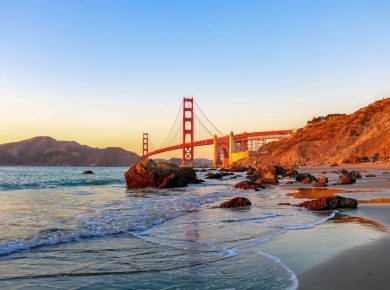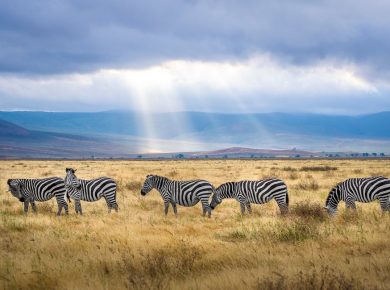What comes to mind when someone mentions Alaska? You’re not far off if you thought of vast landscapes full of snow and the occasional bear. Alaska alone is larger than some whole countries, so it should come as no surprise that the state is home to various weather conditions given its massive territory. On the other hand, if you thought of summers with temperatures in the low 70s, though not a common association with Alaska, you’d also be correct!
Like most places, the state of Alaska gets all four seasons, but some are more intense than others. Those balmy summers are met with winters with temperatures below zero at night. In some parts, the shoulder seasons, spring and fall, come and go more quickly than in others. If planning a state-wide journey, knowing the weather in each place is key to avoiding turning into a popsicle.
Knowing when other tourists visit is essential too. The state, known for its isolation and quiet atmosphere, swells up with visitors at specific points of the year. This can disrupt your fun if a peaceful getaway is what you expect.
The best month to visit Alaska is May for great weather and low prices combined. It’s nuzzled right in the sweet spot where the bitter cold temperatures end state-wide and just before peak season is in full swing.
Avoiding the heavy tourist season and heavy snowfall is challenging but possible. This article assesses the average weather and tourist season trends to determine the best month to visit Alaska for good weather and low prices.
To do this, we will look at three cities spread throughout the state: Anchorage on the south-central coast, Fairbanks in the center, and Juneau on the southeast coast. Though these three hardly represent the whole state, they cover the inhabitable part of it, and they get the most tourist traffic.
Table of Contents
Average Temperature In Alaska
Expect longer, harsher winters no matter where you go. However, the three cities vary in degrees of harshness. Another variable to remember is that Alaska’s interior gets much colder than the coast, where the temperature is a bit more consistent throughout the year.
Fairbanks has the most extreme range in temperatures year-round. Its summers warm to 73°F during the day and drop to 54°F at night in mid-June. Compare that with Anchorage at 68°F and 55°F and Juneau at 65°F and 51°F at the same time.
On the other hand, Fairbanks’ winters drop to a 2°F high and -13°F low in early January. At the same time, Anchorage gets much milder temperatures with 23°F highs and 13°F lows, and Juneau gets the warmest winters ranging from 31°F to 26°F.
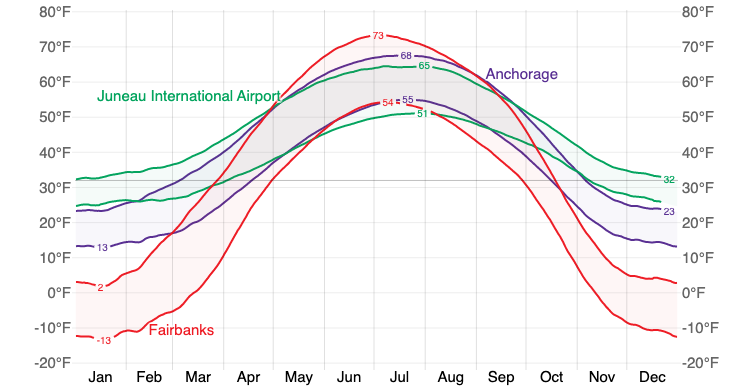
Anchorage and Juneau, though differing in temperatures, share trends and have a smaller, less extreme range of temperatures throughout the year. Neither gets winter temperatures below zero, as in Fairbanks. Both gradually warm up in the spring and slowly descend into winter temperatures throughout the fall. Fairbanks’ spring and fall are much shorter, marked by periods of rapid temperature increase and decrease, respectively.
Though perhaps not the most pleasant for outdoor walks, winters in Juneau and Anchorage make visits possible. Fairbanks, where daily winter highs rest just above zero, is much less hospitable and should be visited in other seasons.
Daily Chance Of Precipitation In Alaska
Like temperatures, the daily chance of precipitation varies drastically throughout the state of Alaska based on season and location.
Juneau gets the most precipitation across the board, with the most significant threat of getting wet in mid-fall. October’s daily chance of rainfall climbs to 74%. At least half the days of each month are wet, except for May and June, which get about 13 days each. Even at its driest, Juneau has a 42% daily chance of precipitation in mid-May. It’s wise to bring rain gear anytime outside the snowy season.
Fairbanks and Anchorage share similar trends; even at their wettest, both are better off than Juneau’s driest month. Fairbanks’s wettest season peaks in mid-July with a 31% chance of rain, and its driest is only a 5% chance in March.
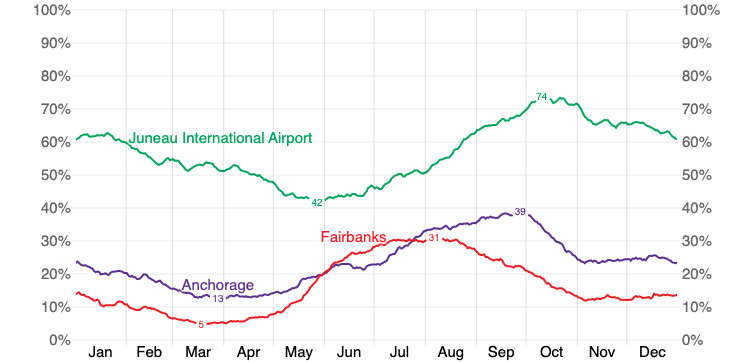
Anchorage’s wet season comes a bit later, peaking at 39% in September and bottoming at 13% in March. Snowfall also depends significantly on geography. Juneau gets up to 23 inches of snowfall at its heaviest in January. Anchorage receives a maximum of 9.7 inches and Fairbanks 5.3; this peak falls in December, earlier than Juneau’s.
Humidity Comfort Levels In Alaska
If you hate humid weather, then there’s excellent news for you! The three cities experience zero muggy days throughout the year. Summer visitors can enjoy long days of extra sunlight and no brutal, thick air beating down on them.
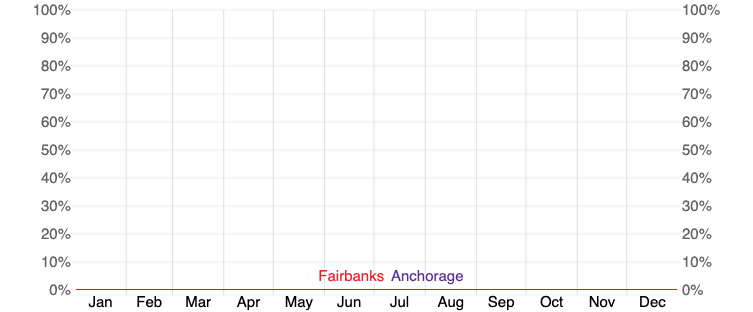
Though there are many bizarre weather conditions to be wary of when visiting Alaska, humidity is not one of them. Instead, when booking, focus on dodging super rainy, snowy, or otherwise freezing days.
Best Time Of Year To Visit Alaska For Great Weather
Alaska’s climate makes it a formidable destination to plan for good weather. While heat and humidity are back-burner issues, chances are you will encounter rain and some blistering cold temperatures. When is the best time to visit to keep as warm and dry as possible? It’s challenging but not impossible!
Two factors are used to decide the best months for weather: the “tourist score” and the “beach/pool score,” respectively. The first is used to determine how pleasurable outdoor activities like sightseeing tours are in a given month. Clear skies and temperatures between 65°F and 80°F are the criteria here.
It should be no surprise that Alaska scores quite poorly in both regards. Fairbanks leads the tourism score pack at 4.6, Anchorage close behind at 4.5, and Juneau at 2.7. The best time to visit the three for sightseeing is late summer.
The beach/pool score is even lower, with the highest scorer, Fairbanks falling below 1 point.
While Alaska lacks the conditions for a beach getaway, that doesn’t make it an inhospitable wasteland. Keep in mind that Alaska isn’t that type of destination. Hiking and winter sports are popular draws for tourists. Had there been tourist score criteria for winter and nature activities, Alaska’s score would have been much higher.
Alaskan cruises are also a popular way of seeing the coastal areas. These start in the spring and end in early autumn. The summer months favor cruises.
If you need warm temperatures and sunny days, July is your best chance of finding it in Alaska. However, if the winter weather is what you’re after, go in the late autumn or early spring when snow is plentiful, but not in piles taller than you.
Best Time Of Year To Visit Alaska For Low Prices
After spending a fortune on warm clothes, you’ll want the rest of your Alaskan adventure to be as affordable as possible. Luckily, there are several periods throughout the year when tourists can visit Alaska for low prices.
Peak season coincides with the warm summer months, so hotels are at their most expensive. Expect a good deal in the $120-150 range. If you visit in the summer, consider Airbnb or other localized forms of accommodation. They’re plentiful in tourist areas, and many are cheaper than hotels in peak season.
For hardcore travelers, visiting in winter is a sure way to save and avoid crowds. Flights will be cheap, and you’ll have the most expansive accommodation options due to the lack of tourists. Take advantage of these deals and access unique Alaskan experiences more suitable in the winter, such as dog sledding and cross-country skiing.
September is among the cheapest months to visit. Flight costs are at an all-time low, and the masses who take advantage of the summer weather have emptied out. This is also true of the cruise industry, which is traditionally busier in the summer. The cruise season doesn’t extend beyond October, and September is the ideal time to take advantage of package deals.
Like September, May steers clear of peak season yet offers low prices on tour packages and accommodation. Enjoy the beauty and grandeur of Alaska before the summer vacationers arrive.
Peak Travel Season In Alaska
Are you spending your summer vacation in Alaska? You’ll get the best weather of the year, but also flocks of tourists. Mid-June to mid-August is the peak season for state-wide tourism. Popular attractions are sure to be packed, and locals will also take advantage of warm temperatures and extra sunlight (up to 21 hours of it in Fairbanks in July!).
Peak season is the best time to take advantage of Alaskan cruises too. They have the most comprehensive availability during this time and don’t run in the colder months. Therefore, expect a higher concentration of tourists in coastal cities where they get let off the boat for excursions.
Though the cities will be a bit busier than usual, that may not be a problem if seeing nature and wildlife is your objective. There’s plenty of countryside for everybody in Alaska! Flight and hotel prices skyrocket during these months, but booking in advance will help you secure a reasonable rate.
Booking a smaller, non-chain hotel or BnB is a good way of cutting costs. These tend to be much cheaper than big hotel chains. Travel during peak season does not have to be expensive if planned in advance.
Shoulder Travel Season In Alaska
Alaska’s brief shoulder season is a great time to snag a deal. Running from late April through May and again in the first half of September, you get the calm right before and after the peak season.
Cruises still run at this time but have considerably smaller numbers. Summer sees ships fill up and wallets empty out. Your best chance of finding a deal is here.
Most tour options run during this time, with a few exceptions. It’s best to check and see which attractions you want and their availability during shoulder season. Some parts of the state are still frozen in late spring. Mountainous areas like Denali are still hard to reach in spring, so doing your research is crucial.
May gets some of the best weather outside peak season. It’s pretty warm, with a relatively low chance of precipitation. Moreover, it’s one of the best months for seeing wildlife, especially if you’re into whale watching.
In September, don’t forget that there’s a growing threat of precipitation on the coast. Though you might catch a great deal in this period, the weather isn’t as good as in May. However, in interior cities like Fairbanks, precipitation is still low.
Low Travel Season In Alaska
October through early April is a long, dark, and cold time in Alaska. Heavy snow covers some areas while freezing temperatures are guaranteed everywhere. However, that doesn’t make Alaska a no-go even during its long off-season.
Some areas will be practically unreachable. Winter tourism is better left to the coastal region, where it’s much warmer. It’s a lovely time to explore these cities without the usual crowds as long as you don’t plan to venture into the countryside much. Places like Fairbanks and Denali are better left for summer vacation.
Some other activities are off-limits during the off-season, too. Cruises shut down, and tour companies shorten their lists of offers to exclude hiking and most wildlife watching.
This is undoubtedly the cheapest time to visit the state if you’re prepared for the rugged conditions. Flight prices are consistently lower in winter, and hotels slash their rates, dying to be filled. Winter tourism in Alaska has its own charm.
In addition to any winter sport, you get a prime opportunity to see the northern lights. After a long day of skiing or bobsledding, you can cozy up by the fire with loved ones in a lodge. Enjoy your peaceful, intimate getaway as well as your vast savings.
Best Months For Travel To Alaska
Alaska is a great choice year-round. However, the best time to visit depends largely on what type of travel you like to do. Don’t write off a winter visit if a quiet, relaxing getaway is more important than cruises or wildlife watching. Though the weather can be harsh, the prices are budget-friendly!
Don’t be turned away by summer’s peak season, either. No matter how many tourists pour in, there’s such a wide variety of activities that not everyone will go to the same places and do the same things. Affordability depends on how far in advance you book.
May is the best month to visit Alaska for great weather and low prices combined. It’s nuzzled right in the sweet spot where the bitter cold temperatures end state-wide and just before peak season is in full swing.
Almost every activity that draws tourists in from around the country is available to book at this time, too. If visiting Alaska in late spring, your chances of staying warm and dry and saving some money are at their best.
